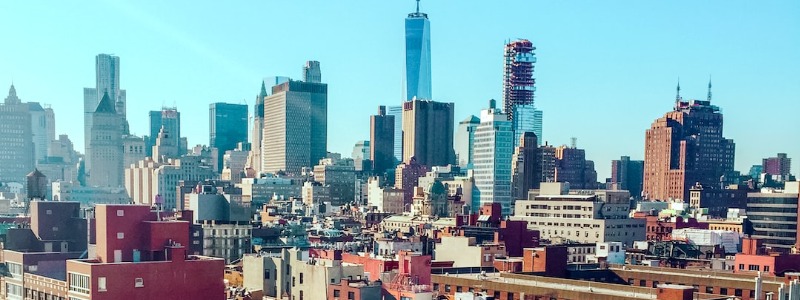The Bowery is a vibrant district in Lower Manhattan that has a rich commercial heritage. Some of the neighborhood’s notable features include the New Museum and Sara D. Roosevelt Park. Today, the Bowery offers an exciting lifestyle with easy access to urban amenities in culture, entertainment, retail, and recreation.
Bowery Attractions and Landmarks
Occupying just less than 8 acres, Sara D. Roosevelt Park takes up a large portion of the Bowery neighborhood. Since opening in the early 1930s, this urban green space has provided wonderful recreational amenities to the local community. As the name suggests, the park honors the legacy of President Franklin D. Roosevelt’s mother.
Located just steps away from the park, the New Museum presents intriguing exhibits of contemporary art. Established in 1977, this museum celebrates artists who don’t get sufficient recognition in the mainstream sectors of their respective specialties. In 2007, the New Museum received a major expansion by a Japanese architectural firm. Resembling a stack of boxes, the new wing stands as one of the most distinguishable landmarks in Lower Manhattan. Towering 175 feet above street level, the unusual edifice is a modern masterpiece in its own right.
The temporary exhibits at the New Museum showcase paintings, drawings, sculptures, and other media. Visitors are also invited to watch multimedia presentations in the White Box Theater, which has an intimate setting. Additionally, the terraces at the museum offer great views of the Bowery and the surrounding districts.
Built in the 1830s, the Bowery Savings Bank is another notable landmark in this neighborhood. Massive Corinthian columns, pediments, friezes, and other Neoclassical installations define the stunning facade of this historic property. In fact, the building served as the first headquarters of the Bowery Savings Bank, which had a modest presence in New York City’s for well over a century.
In the 1960s, the edifice officially gained landmark status in NYC. Today, the Bowery Savings Bank offers fine dining, nightlife, and meeting space in the heart of this vibrant neighborhood. If you’re looking for live entertainment, get some tickets to the Bowery Ballroom. Hosting music and other shows, this trendy venue has enough seats for just less than 600 spectators.
History
The Bowery is an English adaptation of a Dutch term that means farm. In the 17th century, the residents of the New Amsterdam colony settled this part of Manhattan. When the British gained control of the land, heavy development replaced the rustic character of the area.
Since coming into the hands of the United States of America, the Bowery has been an important commercial hub. Theaters, nightclubs, saloons, taverns, and flophouses lined the district in the late 19th century. These venues catered to immigrants from Italy, Germany, and Ireland. The arrival of Asian immigrants in the 20th century dramatically transformed the character of the Bowery. In fact, a portion of this neighborhood is unofficially called Little Saigon in reference to the heavy Vietnamese influence.
Location and Transportation
Carrying vehicle traffic in opposing directions, the Bowery is one of the busiest thoroughfares in Lower Manhattan. This road intersects East Houston Street, which provides an easy way to get between the western and eastern parts of the borough. Connecting Manhattan with Brooklyn, the Manhattan Bridge also merges with the Bowery near Canal Street.
The NYC Subway offers direct service into the heart of this neighborhood. You could take the F and M trains to the 2nd Avenue station on Houston Street. The Bowery Station on Delancey Street is served by the J and Z routes. Additionally, the Grand Street station has tracks that accommodate the B and D lines. Operated by the Metropolitan Transportation Authority (MTA), buses stop along various points on the Bowery.

